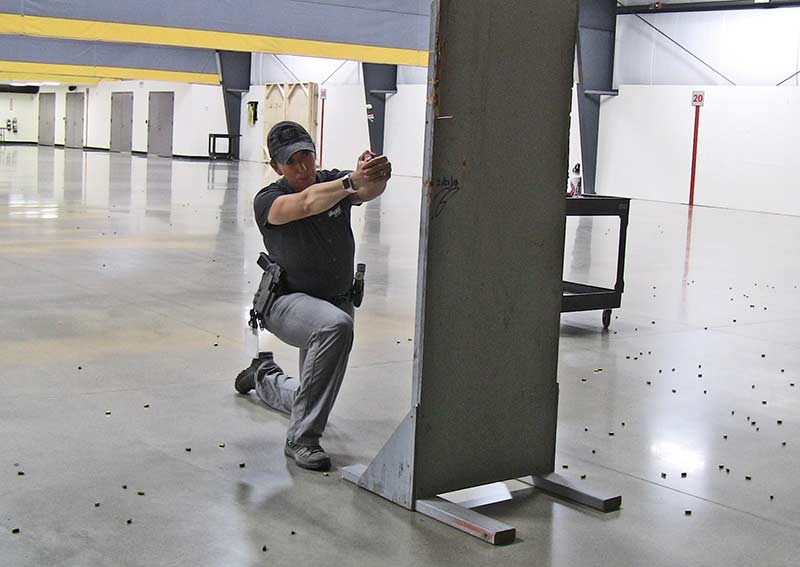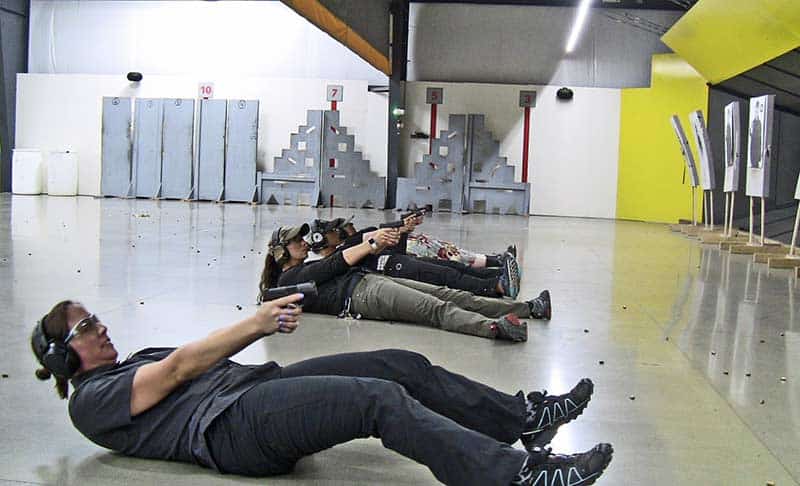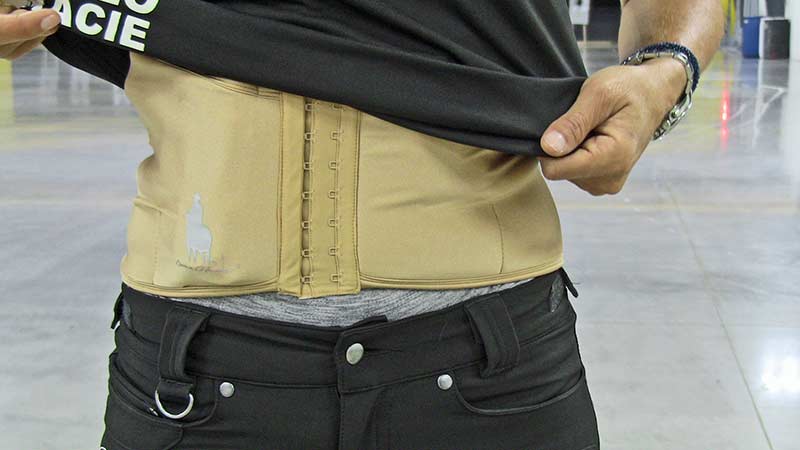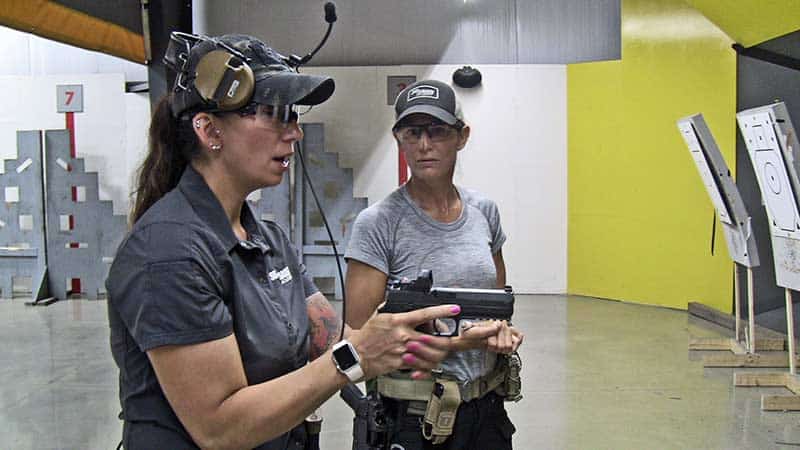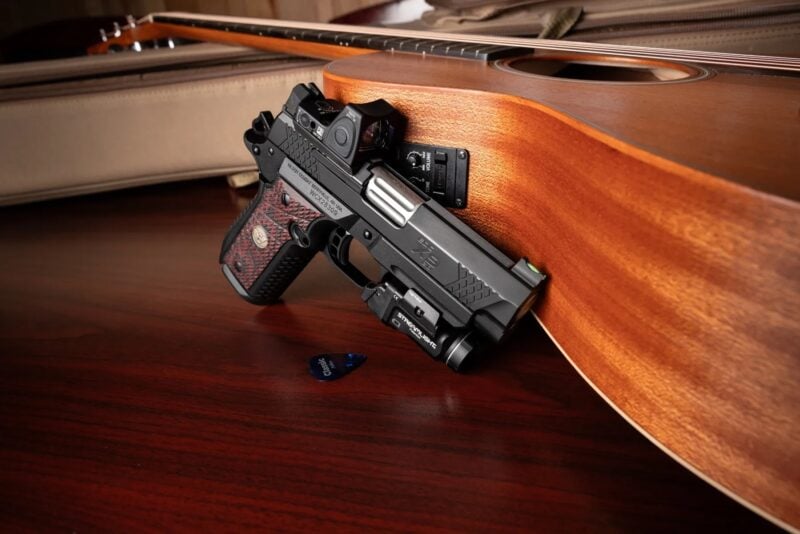More Than Equal
SIG SAUER Academy Women’s Concealed Carry Course
When my editor assigned me to an upcoming concealed carry class, I cringed. Not another “ladies-only concealed carry course,” I thought. Needless to say, I settled in for a long two days. Boy, was I wrong.
First, it was held at the SIG SAUER Academy in Epping, N.H. Located on over 140 acres, it features state-of-the-art indoor and outdoor ranges, a tactical training area, urban environments, multiple shoot houses, a maritime training area, a force-on-force village, the only publicly accessible 1,000-yard range in the New England area, a 360- degree range and a complete Pro Shop.
Second, it turned out not to be a standard ladies’ concealed carry class. This is a lifestyle class, emphasizing the decision to carry is a lifestyle choice, and proper training for self-defense is necessary to have the confidence to react if and when that time comes. It’s also not an entry-level course. Attendees must already have credentials or have completed previous handgun courses at the Academy.
Knows Her Stuff
The Women’s Concealed Carry Course is instructed by Jennifer Moriarty, a 16-year veteran police officer from the Nashua (N.H.) Police Department. Moriarty knows her stuff; she’s been teaching at the SIG SAUER Academy since 2013 and her communication skills are exemplary.
This two-day course started in a classroom environment with Moriarty asking a basic question: “Why do you want to conceal carry?” The answers from the attendees all came back the same — to protect themselves and their family. But Moriarty delved deeper into the mindset of what it takes to carry concealed, asking each person in the class to be honest with their self when answering her other questions.
Are you ready to make a life-changing decision? There could be legal repercussions; are you willing to face those? Will you render medical aid, and do you know how? These were the questions she asked every attendee individually.
She then went on to explain it’s not a choice of whether or not to carry a firearm, but rather a choice of whether or not you want to change your lifestyle. It doesn’t matter your gender or race, when it comes to concealed carry we all have the same decisions to make.
And therein was the difference between this “Women’s Concealed Carry” class and all the others I’ve taken. This wasn’t about slapping a gun on your hip and hitting a target at 10 yards. This was about changing how you live, how you perceive your surroundings and how the decisions you make affect your safety.
Diving In
Moriarty started with an extensive explanation of “tactical considerations.” Is there limited visibility? Is a small flashlight needed so you can make a good decision based on what you see? Can you hit your target given the distance at hand? Can you shoot with one hand accurately? What about alternate force options? Martial arts, pepper spray, baton? And finally, can you get out? If there’s an escape route, take it.
Not once did she advocate taking action first. She wanted to make sure every other option had been considered. Her concern wasn’t that you took action, but that you came to the decision to take action soundly and would emerge safely.
Finding The Right Fit
Women have challenges when it comes to defensive carry, mostly because of our body shapes. We don’t have the straight-line body type men do, so we have to find the option that works best for our body, be it curvy, apple or pear shaped.
Presenting different types of holster and clothing options from Dene Adams, we were given the opportunity to try them all. Dovile Cooper, a 65-year-old attendee, had taken six previous classes at the academy, but never a concealed carry course. A math and science teacher at a private Catholic high school, Dovile was familiar with firearms as she’d been shooting for over 10 years, but she was looking for a better concealment option. An inside the waistband (IWB)/outside the waistband (OWB) system wouldn’t do as she really needed to keep the gun completely hidden, but she found the belly band holster worked best for her body shape and the type of clothing she wears.
My Choice
Coming from Arizona, I’m comfortable with an OWB holster, but I was looking for a concealment option. The IWB holsters there were uncomfortable for me, but manageable except for the 4 o’clock carry, which I struggled with. Reaching behind my back was clumsy and awkward. Thankfully, I discovered this during a training session and not in a real threat situation. However, what I did find what worked for me quite well was the corset holster.
When it was first mentioned, I had visions of those tight laced-up corsets from days gone by, where breathing was close to impossible and comfort was out of the question. But the corset holsters from Dene Adams are flexible and comfortable because they’re made from a four-way stretch compression material akin to shape wear.
The corset has two concealment pouches. The opposite-side pouch holds spare magazines, a knife, flashlight or other accessories. Compression from the garment sucks the gun in while the holster itself is specially lined to smooth the rigid edges of the gun. I found I could draw from the corset holster as easily as I could from OWB.
A Long, But Good Day
The course of fire started with warm-up drills to make sure we had efficiency of movement. We learned two methods on how to move clothing out of the way with the opposite hand while reaching for the gun with your strong hand — grab and pull from across or behind or take your thumb and sweep the clothing out of the way. With two instructors, there was plenty of individual attention and time to make adjustments.
After dry-firing we moved on to the “bullet hole drill” by shooting one round at a time, drawing from the holster and trying to cut the hole. This drill was intended to make sure the skills were there for us.
The next drill was the Walk Back, so we could see what our shooting capability was at different distances. Starting at 3 yards, we took 5 shots, then moved to the 5-yard line and took another 5 shots. From there, we progressed to the 10-yard line and moved back in 5-yard increments from the target all the way to the 25-yard line, taking 5 shots each time to determine where accuracy dropped off. I found what looked scary at 7 or 10 yards is not nearly as scary as 20 or 25 yards, and my groups got much smaller throughout the course of the day, building my confidence.
We then incorporated verbalizing and scanning for additional threats (the situational awareness lifestyle). I learned about stepping off the X, to the left, the right, never shooting from the same place twice, pivoting and turning. From there we focused on how to shoot from cover and concealment and how to properly lean out from cover without exposing too much of your body.
Day two started with more drills from a variety of positions and scenarios. We strapped on ankle holsters, drew from kneeling positions, and then fought to a standing position from a seated or kneeling position and learned to create distance from the target. But the drill getting my attention the most was one for if you’re knocked down, how to access the pistol safely out of the holster, accurately fire and fight back up to a standing position while never taking your eyes off the target.
Is It Worth It?
At $500, this course isn’t cheap, but what you get over two days is well worth the cost and the time in my opinion. This class goes beyond teaching concealed carry, it teaches a lifestyle — and this is a lifestyle that, one day, may save a life.
At the end of the class, I asked Moriarty what was the one thing she wanted her students to take away from the two days. After thinking for a moment she said, “When you leave here, I hope you feel empowered enough knowing that as women you have the same amount of opportunities men do to protect yourselves with concealed carry.”
After an intense two days of drills and hundreds of rounds downrange, there’s no doubt in my mind she accomplished her goal.
For more info:
www.sigsaueracademy.com, Ph: (603) 610-3400; www.deneadams.com, [email protected]

Get More Carry Options content!
Sign up for the newsletter here:



